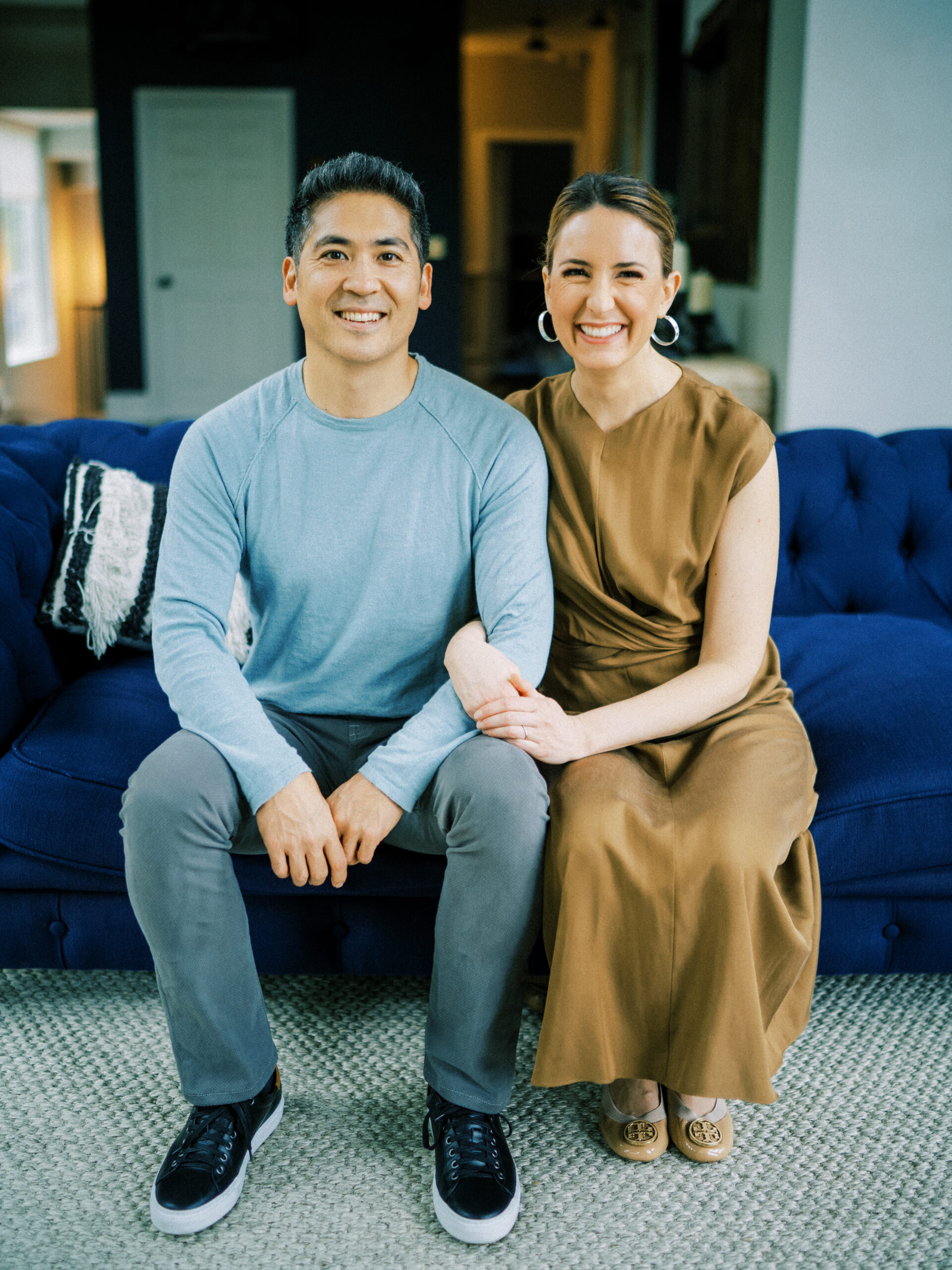The key to any achievement is developing the right mindset to achieve your goals. Letizia Alto and Kenji Asakura are physicians who maximized their high-paying income jobs by investing in real estate. Now they focus and spend most of their time managing their real estate portfolio. They are also helping other high-net-worth individuals learn how to start and invest in real estate to have better rewards. In this episode, they discuss the importance of having the right mindset and a risk mitigation framework for you to succeed. Join us and tune in to find out what made them shift their focus into real estate and how they are managing it today.
—
Watch the episode here:
Listen to the podcast here:
Helping High-Net-Worth Individuals Invest In Real Estate With Letizia Alto And Kenji Asakura
Leti and Kenji are a physician couple who freed themselves from the 60-hour workweek grind. As they say it, “Now, it’s your turn.” Leti and Kenji, welcome to the show.
Thank you for having us. We’re excited to talk to you.
There are three things that I ask every guest who comes to the show. Can you quickly tell us where did you start? Where are you now? How did you get there?
Kenji and I started together in 2015. We’re both physicians. We read Rich Dad Poor Dad together on vacation. At that point, we were about to buy a primary residence. We’re both employees working more than full-time at that point as physicians and we realized that we need to be investors. We completely changed track based on that book, took the money we would put into a primary residence as the down payment and then started investing in real estate. We bought ourselves two duplexes to start in 2015. I should note that Kenji was investing in real estate previous to that since 2001 but largely appreciation plays, raw land and expensive condos.
I got caught in the downturn.
When we started together in 2015, we did cashflowing B-, C-class multifamily. That’s what we’ve built our portfolio for years. We’re about to close on the part of 160-unit. At that point, we’ll be over 150 units ourselves.
From what I understand, you’re also acclaimed famous at your digital nomads. What does that mean?
That’s something relatively new. That means that we travel around as a family. We put all of our stuff in storage in Seattle. Where we are the next month all depends on where we want to go and allowed to go.
We have 3 children with us, 1 employee from our course business and 1 nanny. There are seven of us traveling.
I would take it from that statement that you are both no longer physicians. You’re full-time in real estate.
I stopped my halftime job last October 2020. We haven’t done any shifts in the hospital since. Technically, we’re still moonlighters. We can do shifts but we have not. We’re in real estate. Kenji is the CEO of our real estate portfolio. I’m the CEO of our blog business, which we’ve grown since we started that in 2018. We have about 15 employees and helped 3,000 physicians and their family members.
As well as doctors and other high-income professionals.
It helps you if you take the time to do some thinking and analyze what you need to do next.
They go through our course learning how to invest in real estate.
Let’s rewind a little bit here. Kenji, let’s hear from you where you said that you got caught in the downturn in 2008. What did you learn from that? How are you positioning yourself differently?
One of the things that we do is we incorporate a lot of our teachings from Keith Cunningham, who is the real rich dad, the one who taught Robert Kiyosaki. He’s an amazing business leader. He also was caught in real estate and lost $100 million. It’s a little bit more than I did. One of the things that he teaches is something called a risk mitigation framework. What he says is, “Everybody can easily think about the upsides of any deal but what you have to do is think about the downsides, whether or not you can live with those downsides.” People don’t spend enough time thinking about those downsides.
What I would have done differently is with every investment deal, I would have thought through the downsides, whether or not I could live with those downsides. The other thing that we added to that was we’ve enhanced what he teaches. We think about ways in which we can mitigate those downsides. How can we make those downsides less painful and less likely to happen?
The core of our strategy is to focus on cashflow and that takes into account anything like vacancies or unexpected repairs. We have that financial cushion in case something like that happens. On top of that, what we do is we don’t bet on appreciation. We force appreciation. We look for those value-add opportunities where we can increase the value of those properties, which helps mitigate that risk when there’s another downturn.

There’s so much froth in almost any asset class. How are you presenting that to investors? Are you able to live with the downsides of this opportunity? How do you put that in writing such that they can see, understand, absorb it and say, “Yes, I’m good with that?”
The main difference is that what we’re doing is we’re teaching the doctors and high-income professionals that we work with how to fish. In other words, how to assess those opportunities for themselves. We’re not necessarily telling them the downsides of any particular investment. It’s more about giving them a framework for how to think about any investment that they come across. There are many common themes in each of those investments in terms of assessing the risk, whether it’s the operator, the investment itself or the loan product that they’re using.
With all the different dimensions of an investment, it’s up to them to think through that. One of the things that we do is advocate responsibility. We stop thinking and turn off our brains. One of the things we teach people is to ask good questions. This is also another Keith Cunningham. Take the time to do some thinking. He calls it thinking time. What he does is he schedules time to think about an investment and how many people schedule a time to think about something? That’s one of the things that he teaches us to do. We, in turn, teach our students to do as well.
Leti, let’s talk about the blog. You have a blog with fifteen employees that you’re running. Is it real estate or not?
The theme of the blog is helping doctors and their families create other sources of income outside of clinical medicine so that they can work in clinical medicine on their terms. To a non-doctor, this probably sounds crazy but there’s a lot of suffering in the physician space with how things have changed over the last years. To give you an example, physician suicide doubled in the general population.
A lot of our physician colleagues feel very trapped like cogs in the wheel and don’t feel like they have choices. What we’re teaching them is to buy their investment properties and build that source of income. They can decide how they want to work in medicine. For a lot of them, it means they stay in medicine. They have the freedom to work at whatever job they want or they’re doing their good in their world as a doctor and they don’t need the money, which is incredible. It’s kind of a blog but it’s a blog, podcast and community. It’s more of a course business where we give physicians the tools to buy long-term and short-term rentals and build their portfolios.
What were some of the challenges that you faced along the way of building that platform?
Most people need a mentor in real estate to guide and help them make decisions.
First of all, we’re physicians. We had no idea how to be CEOs. It’s been a lot of learning. What most people need in real estate is a mentor who’s done it themselves. Keith Cunningham had been a real mentor in learning how to be a CEO. I’ve been reading a lot, going to masterminds and speaking to a lot of other entrepreneurs. We joined a mastermind with Tony Robbins. That’s with all bunch of entrepreneurs who we get together with pretty regularly and learn from them. It’s learning from people who have already been in that space.
To give you a sense, we invest in ourselves. We probably spend over six figures every year to invest in ourselves, whether it’s a mindset, business training or whatever we feel like we need.
When you got into that and discovered, “We are doctors who understand what they need,” what were some of the pain points initially where you said, “I know we can solve these items for doctors?”
The biggest thing is psychology or mindset. That’s number one. We think 80% or more of success is your psychology or mindset. You see it all the time. Real estate is a great way for people to uncover their fears and limiting beliefs because it does throw a bunch of curveballs and challenges. There’s a lot of fear about money and investing. One of the things that we work on with our students is mindset and psychology. We try to lead by example by showing them how we take on new challenges all the time. We’re not stuck in a rut or doing one thing. We are always trying to grow and learn. That’s why we’re always investing in ourselves. We’re getting new mentors, identifying new mentors and working with them so that we can push ourselves and get to that next level.
Let’s get maybe into the nuts and bolts of what it is that you do in the real estate side of things. You have a high net-worth individuals or doctors and make them belong. They go through your course. You teach them how to buy single-family, short-term rentals, but you are also multifamily investors. Do you syndicate as well?

That’s the natural evolution but more from the perspective of addressing the limiting belief of, “I don’t have enough money.” When most people invest, they go, “I have $50,000 in my bank account, which means that if I put 25% down, I can go out and buy a $200,000 duplex.”
We were in that mindset for many years too.
That’s the mindset challenge. It’s like, “I don’t have enough money.” If you think about it, that’s a limiting belief. If you turn that question around, “I can’t invest because I don’t have enough money,” and you say, “How can I invest with the money that I have?” then you start to turn on your brain, think and go, “Maybe I can go find partners and raise the money.” In that context, that’s where syndications come into play. The thought of doing syndication without any experience may seem pretty overwhelming.
There are lots of forms of syndications and you can also do the smallest indication. There are also ways that you can partner in a very tax-efficient way like the Tenants In Common or do it the regular way and partner with somebody as well. There are a lot of ways to address that problem of, “I don’t have enough money.” That’s one of the big teachings we do.
Our students invest in single-family homes and short-term rentals because there’s a great tax loophole for short-term rentals. Physicians are very motivated to shelter their taxes but they invest in multifamily. We have students buying 60, 80-unit buildings themselves. What Kenji is describing is our 160-unit that we’re buying a part of. We’re doing it as TIC syndication. Four TIC partners are buying a majority of the buildings. We’re doing a small portion as syndication so we can have some other partners come in and experience the process with us along the way.
Let’s get into some mechanics on this. What is the tax loophole so our readers know what’s called a loophole to tax advantage that you may be able to gain that physicians or other high net worth individuals can use in short-term rentals?
There’s one that is used for short-term rentals and one that’s used for long-term rentals. I’ll start with the long-term rental one because a lot of people have heard of it and that’s real estate professional status. This is what Kenji and I did when we first started investing, which has led to a lot of our growth. Kenji cut down half time that first year as a physician. We bought enough rentals that we could justify that he was spending more time in real estate than as a physician.
He was spending a minimum of 750 hours a year, 500 of which were on our properties. What that allowed us to do is take all of our real estate losses and make them active to shelter active income. Kenji and I have not paid income taxes for six years because every year, we buy enough real estate to shelter our income. We recycle all that money back. All the tax savings and cashflow go back into our real estate portfolio to continue to grow. That’s why we’ve been able to grow so quickly.
The other one is short-term rental tax loopholes. This is what a lot of people are using. I’ll give you another example. We used it in 2020. What we did is we bought a $660,000 cabin, which is where we are, in Index, Washington. We did 100 hours of material participation in setting up the property, doing the deal and overseeing a small rehab. More than anyone else is a key because we couldn’t have our contractors or cleaners do more than us. We self-managed it for one month.
Real estate is a great way for people to uncover their fears and limiting beliefs.
We bought it in September 2020, did a small rehab and had several stays during December 2020. That’s doing that 100 hours more than anyone else in the calendar year. That allowed us to write off the bonus depreciation, furniture, rehab off of active and create huge tax savings because we were actively materially participating in the property.
There are a lot of terms there but I wanted to boil it down for people because if you’re a doctor or other high-income professional and are paying taxes, you’re doing it wrong. You don’t have to. You can invest in real estate, cashflow, make money and at the same time, shelter your income. There’s a way to do that with either long-term or short-term rentals or both, which we did in 2020.
A lot of people are doing both.
If you don’t know about it, you don’t know about it. The ability to shelter from taxes, especially for high-income earners, is going to be your largest expense every year. It’s going to be your tax bill. The ability to offset is strategically powerful.
One thing I wanted to mention was it’s true that there’s going to be a subset of people who don’t know about it. I know people reading this are also running into that psychology and mindset which is, “For me to do that, I would need to go buy my real estate, manage it and do all this stuff. I don’t have the money to do that.” Those are the kinds of statements that people are thinking reading this who are saying to themselves, “That’s great for them but not for me.” That’s where I want to bring it back to that psychology mindset and why it’s so important.
Let’s talk about the TIC you are working on. I’ve not done a Tenant In Common deal before, so break it down why you did a Tenant In Common deal. Talk us through that part.
We did another Tenant In Common deal in 2020. This was a thirteen-unit and went 50/50 with another tenant. You’re not partners. You’re co-owners and that’s a key distinction. People use the term partner synonymously with co-owner but it is very different. Why it’s important is that when you’re a co-owner, you own 50% of a property. What you mean is you’re a co-owner but you control the whole property. You can do whatever you want with it. The key is that as a co-owner, you can 1031 into and 1031 out of the deal. That’s very different than if you are a partner where you’re married to somebody.

When you want to 1031, which is a great way to tax-defer, you together sell that property and go into the next deal together. There’s no way to break up that marriage without impacting your ability to 1031. The reason why the TIC is attractive is that you can 1031 into and 1031 out. In this 160-unit deal, we’re investing our own money into this deal. A lot of syndicators do is that when they put their skin in the game, they put it in as a limited partner. When they sell that 160-unit, they pay capital gains and can’t 1031 that into another deal unless the whole group goes into that next deal together.
There are ways for you to drop out and things like that but if you’re going to put skin in the game in syndication, it’s a lot easier for you to 1031 out of that deal if you put your money in as a TIC. It’s the same thing from the investor’s perspective because you still got a lot of skin in the game but you’re not putting it alongside them as an LP. You’re putting it in as changing the structure, putting your money in differently.
I completely understand what you’re talking about. I was dealing with paperwork on an exit where I am an LP. I invest passively in a lot of deals. Half or three-quarters of the group is moving on and doing 1031. The other quarter with minor IRA funds is like, “I don’t care if we 1031. It’s IRA funds. They’re not saving any taxes by moving on. I’m not interested in the next deal of 1031 against you.” There are all these different wonky LLCs being created. It’s a paperwork nightmare. There are ways to give a little more color to what you’re saying. Get to do 1031 if you want to and have some members not do it but it’s a lot of repapering and hoops you’ve got to jump through.
Kenji and Leti, I’ve enjoyed our conversation. This has been a blast. You have shared a wealth of information on what you’re doing. I’d love to see the explosive growth you’ve had over the last few years. This is wild and crazy. We’ll have to keep track of where you guys go and what your next steps are. Let’s jump here into the final four questions if you don’t mind. What is one tool or resource, digital, that you find you can’t live without?
The tool that’s helpful to us is Facebook because we have such an incredible community on Facebook and they help each other. It’s based on abundance. If somebody needs a contractor or somebody to look at their cash-and-cash calculator, that 2nd, 3rd or 5th pair of eyes is so important. When we started, we were doing this ourselves. We had our small team of agents, contractors and stuff but largely, we were on our own and looking at deals. To have a community is the most powerful thing you can do as an investor. It allows you to get multiple perspectives to balance those downsides and figure out how to make the best decision. It is about minimizing your mistakes and that’s how you get ahead.
Once you learn how to make money, you always have that skill.
Question number two, if you could help our readers avoid one mistake in real estate, what would it be? How would you avoid it?
I have to speak for Kenji and the mistakes that he made. He was betting on appreciation and not on cashflow. One thing that Keith Cunningham says is, “Raw land eats three meals a day.” That’s very true. Kenji even had some properties, some raw land deals in Florida that he had bought for $150,000 that he had offers on for $250,000, $300,000.
You could buy a property for $150,000 and sell it within 6 months for $350,000, $400,000. For those investing back in the day, you would remember this but right after the downturn, those properties that I bought for $150,000, I couldn’t even sell for $5,000 if I wanted to because nobody wanted to pay the property taxes or the HOA dues in some cases. It was a significant drop. I finally got rid of my last property 13 years later for $50,000. I bought it for $150,000 and then I sold it for $50,000.
I was paying HOA dues. I caution people when they’re buying raw land. It is very frothy, to use your word, and I hate to see people get caught when the downturn comes, if it comes very quickly, which it very well may.
It’s a good comment to put in there around short-term rentals. There’s a craze going on. I’ll probably be getting this wrong. If you run enthusiastically in the wrong direction, that’s not going to get you anywhere. That’s stupid. You want to make sure that you’re not enthusiastically running in the wrong direction in terms of your investments. Make sure that you are thinking about the investment as if the downturn is going to happen and think about what’s going to happen to those property values when that does happen.
The third question for you is when it comes to investing in the world, what’s one thing you’re doing to make the world a better place?
It’s what we were saying about teaching people how to fish. The core of what we do is that we are always thinking about how we can make our students more successful. A lot of that is how we can teach them to learn this and be able to do this themselves confidently and competently.
If you read Rich Dad Poor Dad, it has a lot about financial literacy and how important it is to get it for yourself rather than hand your money off to somebody else. Once you learn how to make money, you always have that skill. We took that to heart and felt very passionately about helping others get the skills themselves.
If our readers want to get in touch with you, what is the best way to do that?
You can check us out on Semi-Retired MD. That’s our blog. Our podcast, which will soon be renamed, is Doctors Building Wealth. That’s probably the easiest place to find us.
Thank you so much for your time. I do appreciate it.
Thank you. This is a lot of fun. Great questions.
Important Links:
About Letizia Alto
 Letizia Alto is a physician, real estate investor, and blogger at Semi-Retired MD. She and her husband started investing in small multi-family real estate in 2105 and, as a result of a combination of cash flow, forced appreciation, and tax savings, Letizia and her husband were able to achieve financial freedom in a matter of years. She now works as a hospitalist half-time, while continuing to build her personal real estate portfolio and blogging. Her passion is helping her fellow physicians learn how to buy the cash-flowing rentals that free them to work in clinical medicine on their own terms.
Letizia Alto is a physician, real estate investor, and blogger at Semi-Retired MD. She and her husband started investing in small multi-family real estate in 2105 and, as a result of a combination of cash flow, forced appreciation, and tax savings, Letizia and her husband were able to achieve financial freedom in a matter of years. She now works as a hospitalist half-time, while continuing to build her personal real estate portfolio and blogging. Her passion is helping her fellow physicians learn how to buy the cash-flowing rentals that free them to work in clinical medicine on their own terms.
Kenji is an internal medicine-trained hospitalist with a strong entrepreneurial background who currently moonlights in medicine while spending the majority of his time managing his and Leti’s multifamily real estate portfolio. He also blogs at Semi-Retired MD where he helps his fellow physicians achieve financial freedom by investing in cash-flowing rentals so they can work in medicine on their terms.

